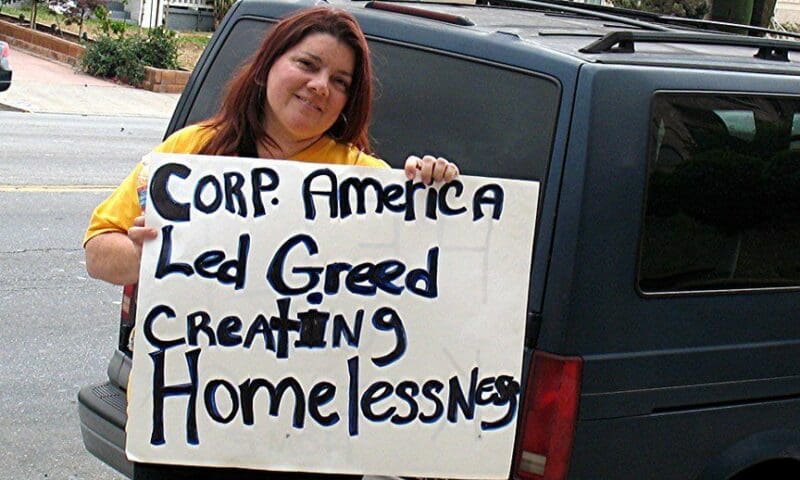
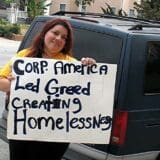
For Catherine Green, home for the last three decades has been a comfortable apartment in the sprawling 43-unit Boulevard Villa near Crenshaw and Venice boulevards in Mid-City Los Angeles. Her alert gaze, energetic demeanor and perfect posture give no hint of a life that’s spanned 90 years. “I was one of the first people to move in here,” she says with a strained smile. “I’ve seen ’em come, and I’ve seen ’em go. This is my community, my village.”
Tanya Rhodes, a retired nurse, and her disabled daughter also call this place home, and have done so for the last 22 years. Louis Gates, a sturdy man with a steely glare, is a Vietnam vet who relocated here five years ago. Between nervous puffs on a cigarette, he expresses how happy he was when he moved in, and says sadly, “I thought this was going to be the last place I would move into.” If the winds of fortune do not change soon,
» Read more about: As L.A.'s Rents Rise: Crenshaw Tenants Battle Eviction »
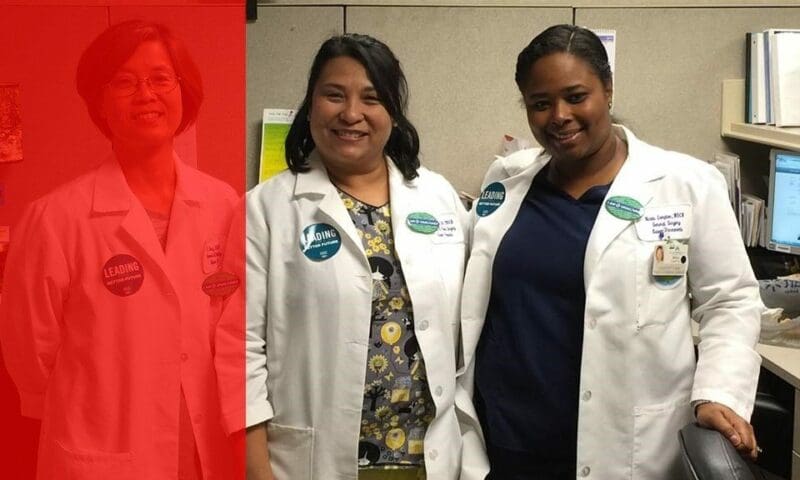

The day after undergoing complicated surgery for pancreatic cancer, a friend’s 76-year-old-husband became combative and aggressive while being cared for in an Intensive Care Unit. He stood up, tore out his IV and nasal gastric tubes, and pushed the nurse who had come to get him to lie down. Eventually he had to be tied down to his bed with hand and foot restraints because he was kicking and thrashing about – even kicking his wife in the stomach. Not the type of scene we expect in an ICU.
For nurses these days, however, it seems that assaults and acts of violence have become part of the job. According to Christy McConville of the United Nurses Associations of California, workplace assaults are now being captured on video and shared on social media, creating a new awareness of the problem.The federal Bureau of Labor Statistics reports that violence against hospital workers is nearly five times greater than against average workers in all other employment categories combined – and it seems to be rising.
» Read more about: Urgent Care: Protecting Nurses Against Workplace Violence »


Maria Bustillos and Elizabeth Fladung discuss their experiences reporting on the pervasiveness of food deserts in the midst of California’s food production heartland.
![]()
This podcast is an encore posting from our State of Inequality series.
Maria Bustillos is a journalist and critic living in Los Angeles.
Elizabeth Fladung is a Brooklyn-based, CalArts-trained photojournalist. Her work has appeared in The Nation, La Repubblica, The Fader and Wax Poetics Magazine.
» Read more about: Going Down Highway 99 Feeling Sad (and Hungry) »


The power of art to effect fundamental social change will be on display in Los Angeles this week as a major 10-day “pop-up” exhibit of visual art and accompanying performances, and workshops opens Friday at a former movie theater in the city’s Baldwin Hills neighborhood.
Called Manifest: Justice, the event will showcase over 250 works from more than 150 artists, along with 30 community events that focus on race and criminal justice reform, inequality, healthy communities and immigration reform. It is being produced with support from the California Endowment and Amnesty International.
Drawn from across the country, the list of participants includes such marquee artist-activists as the godfather of guerilla poster caricaturists, Robbie Conal, and Obama ‘HOPE’ agit-provocateur Shepard Fairey, as well as a host of up-and-coming street muralists and wheatpaste artists, inducling the likes of Tatyana Fazlalizadeh, Favianna Rodriguez and Jesse Hazelip. Also on hand will be big-league gallerists such as collagist-photographer Lyle Ashton Harris and painter-sculptor Eric Fischl.
» Read more about: 'Manifest: Justice' Art Show Explores Inequality and Reform »


Maria Bustillos and Elizabeth Fladung discuss a day spent exploring inequality in Bakersfield, “The India of the U.S.,” and a very interesting person they met along the way.
This podcast is an encore posting from our State of Inequality series.
Maria Bustillos is a journalist and critic living in Los Angeles.
Elizabeth Fladung is a Brooklyn-based, CalArts-trained photojournalist. Her work has appeared in The Nation, La Repubblica, The Fader and Wax Poetics Magazine.
» Read more about: Podcast: Hope and Hopelessness in Bakersfield »


 In The Public Interest made a big splash a few years ago with our report that showed many private prison contracts include a “lockup quota,” also known as a bed guarantee, which ensures high levels of taxpayer funds go to corporations even when prison populations decline. When states agree to 80 percent, 90 percent or even 100 percent occupancy guarantees, policymakers are disincentivized from the kind of sentencing reform we desperately need to pass.
In The Public Interest made a big splash a few years ago with our report that showed many private prison contracts include a “lockup quota,” also known as a bed guarantee, which ensures high levels of taxpayer funds go to corporations even when prison populations decline. When states agree to 80 percent, 90 percent or even 100 percent occupancy guarantees, policymakers are disincentivized from the kind of sentencing reform we desperately need to pass.
But the federal government is currently giving a different kind of guarantee to prison companies, one that not only guarantees profits but doesn’t make us safer. It’s known as the “Immigrant Detention Quota” and it’s helping make GEO Group and the Corrections Corporation of America (CCA) a lot of money. According to a new report from Grassroots Leadership, the two largest private prison companies in the U.S. now run 70 percent of the ICE Detention System and are working hard to expand that share.
» Read more about: Jailhouse Shock: U.S. Fattens Profits of Private Immigrant Prisons »


Maria Bustillos and Elizabeth Fladung share their views about a trip to Palm Springs, land of mountains, casinos and trailer parks.
This podcast is an encore posting from our State of Inequality series.[divider]Maria Bustillos is a journalist and critic living in Los Angeles.
Elizabeth Fladung is a Brooklyn-based, CalArts-trained photojournalist. Her work has appeared in The Nation, La Repubblica, The Fader and Wax Poetics Magazine.
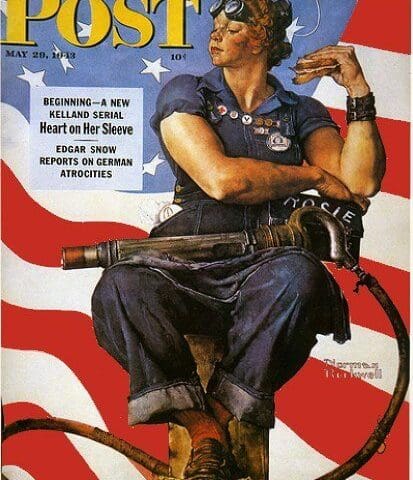

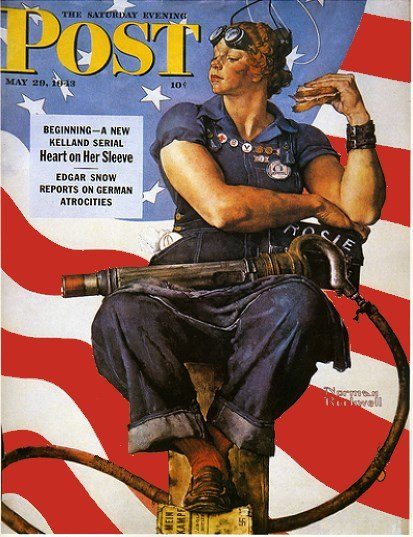 She was the perfect patriotic icon: Sassy yet dignified, brawny yet feminine – a massive rivet gun cradled on her lap, feet resting on a copy of Mein Kampf. And all the while she holds a sandwich as Old Glory ripples in the background. Mary Doyle Keefe, a Vermont telephone operator who posed for Norman Rockwell’s immortal Rosie the Riveter painting, first publicly seen on a 1943 Saturday Evening Post cover, died Tuesday at the age of 92. At the time of her brush with fame, Keefe was Rockwell’s neighbor and a little embarrassed that the artist had pumped iron into the painted arms of the petite 19-year-old.
She was the perfect patriotic icon: Sassy yet dignified, brawny yet feminine – a massive rivet gun cradled on her lap, feet resting on a copy of Mein Kampf. And all the while she holds a sandwich as Old Glory ripples in the background. Mary Doyle Keefe, a Vermont telephone operator who posed for Norman Rockwell’s immortal Rosie the Riveter painting, first publicly seen on a 1943 Saturday Evening Post cover, died Tuesday at the age of 92. At the time of her brush with fame, Keefe was Rockwell’s neighbor and a little embarrassed that the artist had pumped iron into the painted arms of the petite 19-year-old.
Rosie the Riveter had too much whimsy and restraint for it to fade into kitsch or agitprop oblivion. Like J. Howard Miller’s equally famous “We Can Do It!” poster, with which it is sometimes confused,
» Read more about: ‘Rosie the Riveter’ Model Dies — Rockwell Painting Owned by Walmart Museum »


Maria Bustillos shares her thoughts on our country’s failure to invest in higher education access and the mounting toll it is taking on students today.
This podcast is an encore posting from our State of Inequality series.
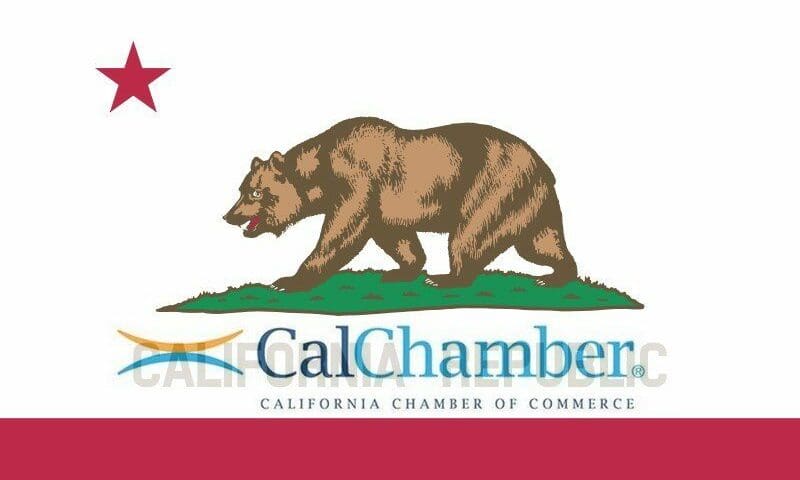

California’s Chamber of Commerce is best known for its Job Killers list, which the king of business lobbies uses to scare off state legislators from passing laws that might, among other things, protect workers from wage theft or force oil companies to pay extraction taxes. (In reality, the Job Killers list is more of a bill-killers list.) But the CalChamber isn’t all about killing. Last week it revealed its kinder, if not gentler, side in the form of a Job Creators list. (Who knew?) The lawmaking season is still young, but already the CalChamber has begun identifying bills that it claims will allow more Californians to enter the workforce.
* * *
It’s not entirely clear what jobs, if any, would be created by Corporate Democrat Adam Gray’s bill,